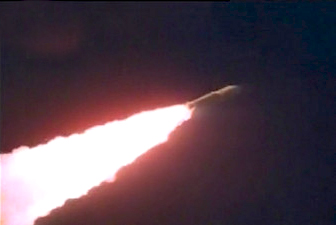
Bangalore, September 29: India’s advanced communication satellite GSAT-10 was successfully launched early on Saturday on board Ariane-5 rocket from Europe’s spaceport in French Guiana.
Weighing some 3,400 kg at lift-off, it is Indian Space Research Organisation’s 101st space mission.
According to Bangalore-headquartered ISRO, the spacecraft, carrying 30 communication transponders (12 Ku-band, 12 C-band and six Extended C-Band) was launched about 30 minutes after the blast off from the European launch pad in South America at 2.48 am and was telecasted live by Doordarshan.
Also, it has a navigation payload GAGAN that would provide improved accuracy of GPS signals (of better than seven metres) to be used by the Airports Authority of India for civil aviation requirements.
This is the second satellite in INSAT/GSAT constellation with GAGAN payload after GSAT-8, launched in May 2011.
GSAT-10 Project Director T K Anuradha, Director of Satellite Communication and Navigation Programme, N Prahlada Rao, Additional Secretary of the Department of Space, S Srinivasan and Director of ISRO Satellite Centre S K Shivakumar were among key officials who were in French Guiana for the launch.
GSAT-10 would have an operational life of 15 years. ISRO said it is a Rs 750 crore mission for the Indian space agency, that includes the cost of satellite, launch services by the European space consortium Arianespace and insurance.
This satellite is based on EADS Astriums Eurostar E3000 platform and features Ku- and Ka-band payloads.
The mission is designated VA209, signifying 209th launch of an Ariane family vehicle since 1979.






Comments
Add new comment